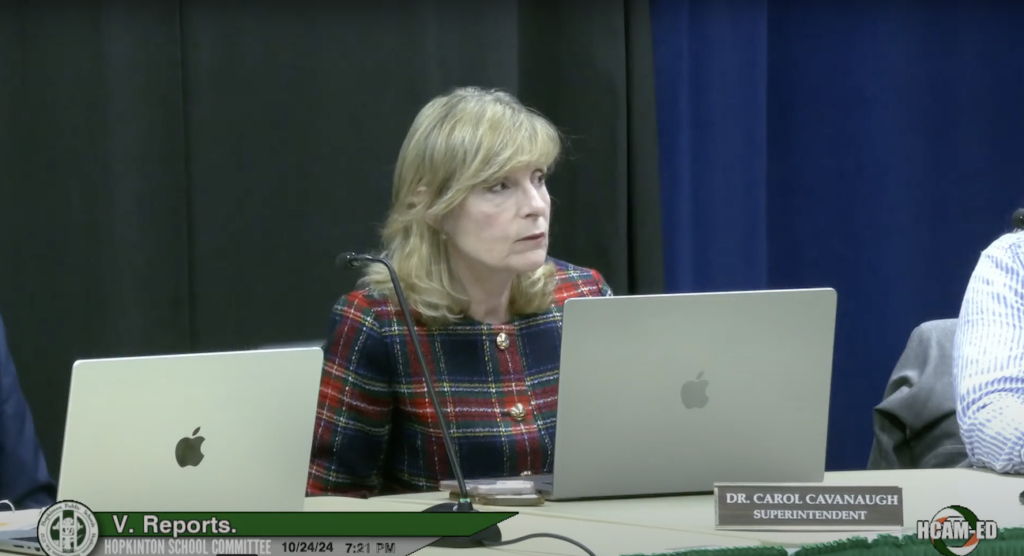Hopkinton students involved in asynchronous learning will be required to spend one hour of virtual contact time per day with a teacher starting Jan. 19, superintendent Carol Cavanaugh said Wednesday.
This hour could include a variety of options, including morning meeting check-ins, instructional read-alongs and STEAM (science, technology, engineering, arts and math) lessons, she said during an appearance on HCAM’s Hopkinton Hangout Hour.
In some cases, building principals will serve as the point of contact for students.
The requirement was issued by the state Department of Elementary and Secondary Education. Cavanaugh described regulations required in the wake of the pandemic as “perhaps the biggest unfunded mandate to hit Massachusetts public education.”
But, she said, “I think it is really important that our kids have a point of contact with an adult every day.”
In some cases, this could motivate students to get up earlier to begin their learning day, which she said could then help them get more sleep to prepare for the next day’s learning.
She will request an extension of the start time for this new policy at the high school to accommodate the start of the new semester Feb. 1. She said state officials do not expect she will have difficulty securing a waiver.
Cavanaugh said parents will receive specific information on these changes soon.
Cavanaugh also said adults in the schools should receive the COVID vaccine in the near future.
“This is really exciting,” she said. “It’s what we have waited for, for a very long time.”
As successful as remote learning might be, it does not compare to having students in the classroom full-time, she added.
“I don’t think virtual learning is ever going to be a substitute for the experience kids have in the classroom,” she said. Standing over a child’s shoulder, a teacher can read his or her body language and help them in real time with a problem they are struggling with, for example.
“It’s really hard to replicate that,” she said.
She also said that MCAS testing will be held this year in a shortened version.
The results will not be used to rank school districts but instead to provide a “benchmark” of where students stand in math and ELA (English language arts).
Learning these results will help determine “how to catch them up to grade level,” especially considering the loss of learning time in the wake of the pandemic.
















0 Comments